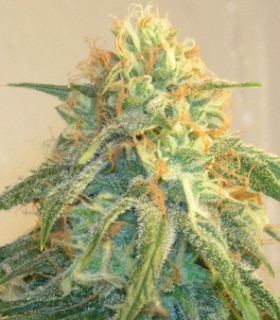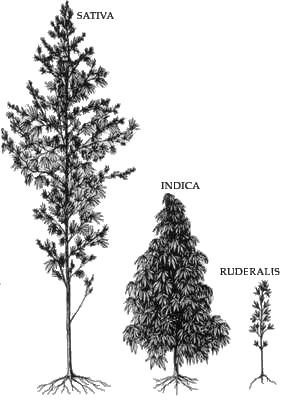by Nebula Haze
Table of Contents
Learn About the Different "Types" of Marijuana: Indica, Sativa & Ruderalis
Would you like to find the perfect strain for your symptoms?
First off, where you can get seeds for these strains?
If you know someone who is already growing any of these strains, it's easy. Just ask them for seeds or clones.
For the rest of us…
Learn where to buy marijuana seeds online safely
What Medical Marijuana Strain is Right For Me?
First, let me introduce you to the main things you need to know about strains (when buying seeds online for your particular symptoms)
Medical cannabis growers should pay close attention to THC levels, CBD levels and Ratio of THC/CBD of their buds. Learn more about THC, CBD and other cannabinoids here
Medical Marijuana for Specific Conditions
How to Make Medical Cannabis Extract Oil
Learn About the Different "Types" of Marijuana
Quick note:
All "strains" of marijuana, including hemp, are sometimes technically still considered varieties of the plant "Cannabis Sativa."
Scientifically, these are not different "strains" of marijuana as much as they are "varieties" of the plant Cannabis Sativa.
This is confusing sometimes, because people will talk about "Sativa" varieties of Cannabis Sativa as well as "Indica" varieties of Cannabis Sativa.
This isn't important to the grower, but sometimes you'll run into someone who argues about the proper language, and understanding the distinction between what science says and what growers say will help you.
Indica, Sativa, Ruderalis, Oh My!
According to wikipedia, "Cannabis sativa is an annual herbaceous plant in the Cannabaceae family."
In the common language, we have differentiated the different varieties or "strains" of marijuana because each one grows differently, contains different cannabinoid profiles, and has different effects on people.
These facts are what's most important to the grower.
The Indica variety of marijuana tends to grow short and bushy, with wide/fat leaves. The buds produced by Indica plants tend to cause a more heavy and relaxing effect, known as a "body high", and can cause people to feel "couchlocked."
Indica plants tend to be well-suited to grow indoors because of their shape and Indica buds are especially suited to relieve insomnia, muscle tension, nausea, lack of appetite, anxiety, body pain, and depression.
The Sativa variety of marijuana tends to grow tall and lanky, with thin, fingerlike leaves. Sativas also generally have a longer flowering period and grow buds that are more airy and less dense than from an Indica.
The buds from a Sativa plant cause more of an "in your head" high, sometimes psychedelic, sparking creativity, uplifting your mood, and even can be energizing for some people. Sativa varieties of marijuana are often better suited to growing outdoors as they can grow to 20 feet or more in height. While an indoor grower can use growth control methods to control the height and shape of the plant, a full Sativa can be tough for an indoor grower with limited space. Therefore, many indoor growers who love the Sativa effects will opt for a hybrid that carries the same bud properties, but has been bred to be easier for indoor growing.
Well-loved by artists, Sativas are especially suited to relieve depression, migraines and certain types of pain, while being more "day-friendly" and energizing than many pure Indicas.
The Haze variety is often considered a type of Sativa, or at least Sativa-dominant, yet Hazes have a few unique properties all their own. The genetics of this strain are a combination of Sativas originally from Mexico, Colombia, Thailand and India.
Hazes tend to have psychedelic and uplifting effects, and Haze plants have contributed genetics to many famous strains such as Super Lemon Haze, Northern Lights, and Jack Herer. Hazes tend to have very long flowering periods, though stay shorter and are easier to grow indoors than a pure Sativa.
The Ruderalis variety of marijuana that was once known as 'ditchweed.' With no psychoactive properties on its own, pure Ruderalis plants have been mixed with other strains because of one unique property… Unlike most strains of marijuana, Ruderalis or Auto-Flowering strains will naturally go into flowering on their own, without the need for the 12-12 light change to let the plant "know" it's time to start flowering.
Basically, a Ruderalis plant will go through its whole lifecycle in about 3 months, regardless of what you do as a grower. This can be bad if you'd like to harvest big yields, but can be convenient since Ruderalis plants tend to stay very short and are well-suited to small, indoor spaces.
Learn more about Ruderalis/Auto-flowering strains
A Hybrid is any combination of the cannabis varieties listed above. Hybrids make up the majority of all the strains you will encounter or be able to buy today.
A Note About Ruderalis/Auto-Flowering Plants and CBD
Ruderalis strains used to be less "potent" with THC than other strains of marijuana, since original Ruderalis plants had basically zero THC. In recent times, many strains have been developed that have nearly comparable THC levels, which maintaining the auto-flowering characteristics of Ruderalis.
Another unique property of Ruderalis strains is, like hemp, these strains tend to have higher levels of CBD which have many implications for medical uses such as anti-anxiety.
Learn more about CBD and other cannabinoids here:
https://www.growweedeasy.com/thc-cbd-cbn-when-to-harvest-marijuana
Want a high-CBD auto-flowering strain?
Here is a list of some popular high-CBD auto-flowering strains:
White Widow Auto by Dinafem Seeds
- Typical CBD 10% | THC 5%
- THC:CBD ratio is 1:2
CBD Auto Compassion Lime by Dutch Passion
Estimated THC 8-9% | CBD 9-10%
CBD Med Gom Auto by CBD Crew
Guaranteed Minimum 4% CBD
Typical CBD 8-15% | THC 6-8%
THC:CBD ratio is 1:1 or 1:2
CBD Crew is a trustworthy company for high-CBD strains, and have specifically been breeding high-CBD strains since 2009.
Important! There are sometimes different versions of strains by different breeders. You can often find several versions of very popular strains, and each version can grow wildly different from each other and which produce different results.
"White Widow" from one breeder may be completely different that "White Widow" by another breeder. So when researching strains, always pay attention to the breeder in addition to the strain name.
Learn about some trusted breeders.
How to research a possible strain to grow (some ideas from how I do it)
Make a list of a few possible strains to grow – If you don't already have an idea about which strain you want to grow, it helps to start by narrowing down your list to just a few possible strains. When I'm researching for a new grow, I usually start with a big seed bank, since they give you lots of helpful information about each strain. These big seed sources usually have a "strain selector" option that lets you put in the specific features you're looking for and get a list of results. I use Seedsman because they only carry seeds by trusted breeders.
Search for a grow journal with pictures of your strain during the grow process – Type "STRAIN-NAME grow" into Google.com and look at the regular results plus the Google image results. When looking at image results, it's important to click through to the page instead of just looking at the image so you can learn more. These steps may give you good leads toward finding a grow journal featuring your strain, but not always. Remember to also pay attention to which breeder the grower got their strain from.
Search for the strain name in Youtube – you may possibly find people who may have grown the strain and documented their grow with video. Video is a great way to give you an idea of your strain might look like while it grows, and lots of growers post full video grow journals on Youtube. Again, also pay attention to the strain breeder.
Seedfinder – I like the site http://en.seedfinder.eu/ for strain research. It is one of the best ways to find out the genealogy and ancestry of a strain by a particular breeder. It has growing reviews and pictures for some strains which is really helpful, but that can be hit or miss since many strains are missing any type of grower feedback. Some of the reviews are in German or other languages. You can translate almost any language into English by copying and pasting it here: https://translate.google.com/
One last thing to keep in mind… Looks are important to many growers, and looks are part of the whole experience when using cannabis.
…But when it comes down to choosing the strain, I recommend to first choose strains that produce the effects you like as opposed to thinking only about density or looks. Some strains may not produce buds that look as dense or colorful as what you see in magazines and online, but will give you exactly the effects you are looking for.
Learn how to buy seeds safely:
https://www.growweedeasy.com/seeds



